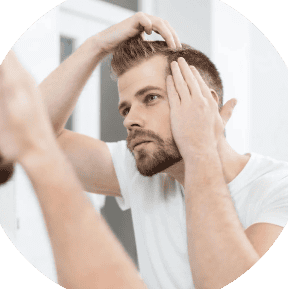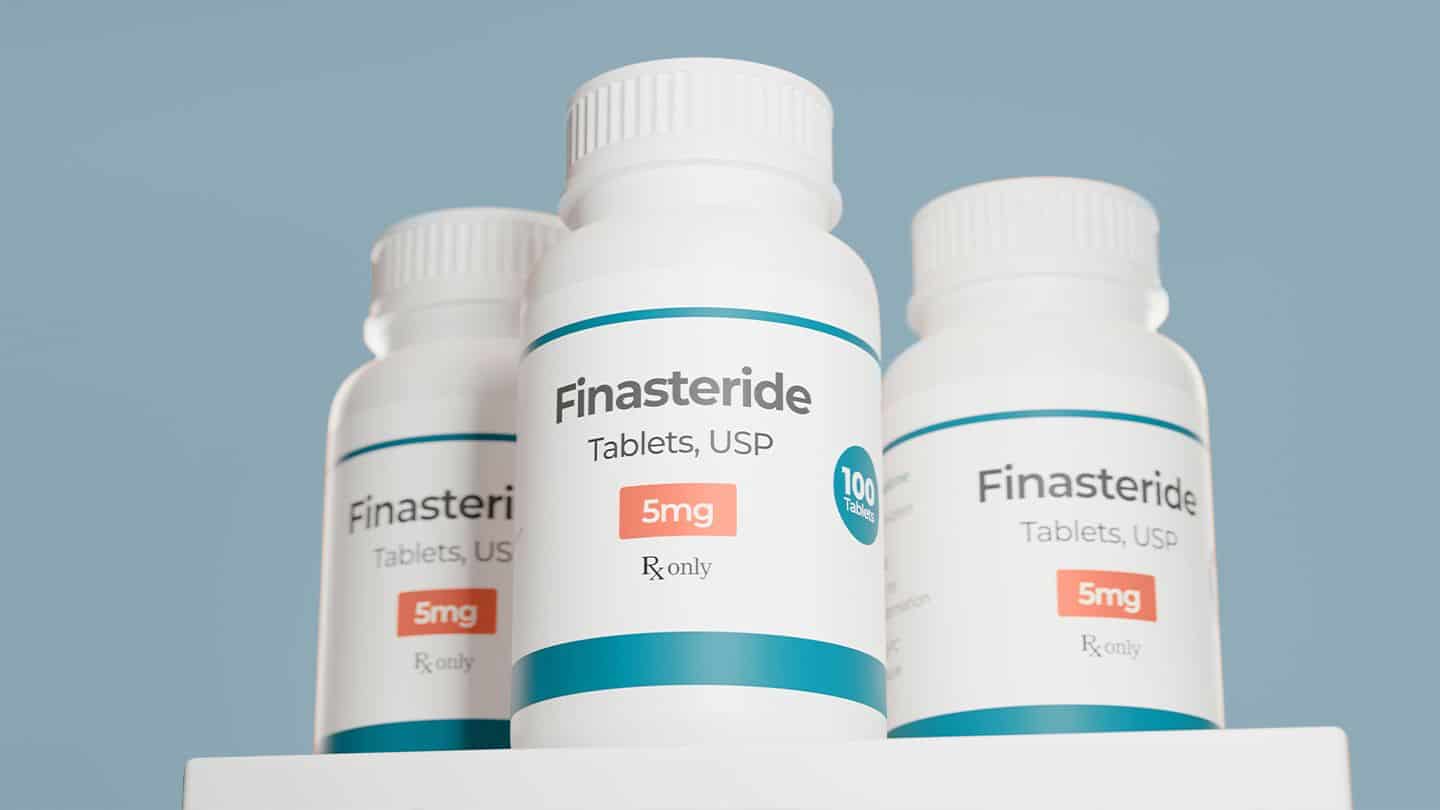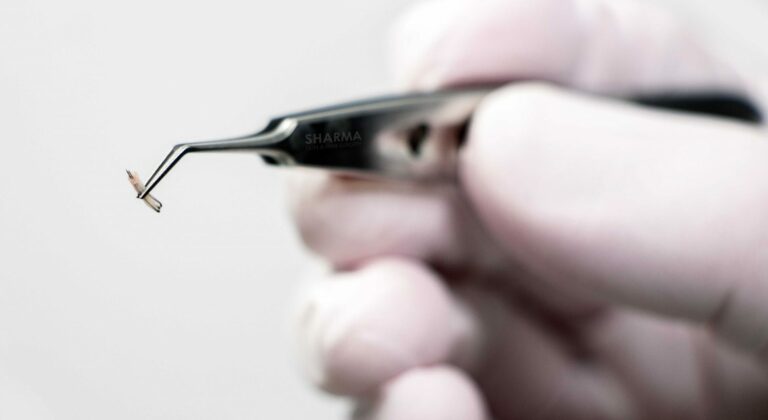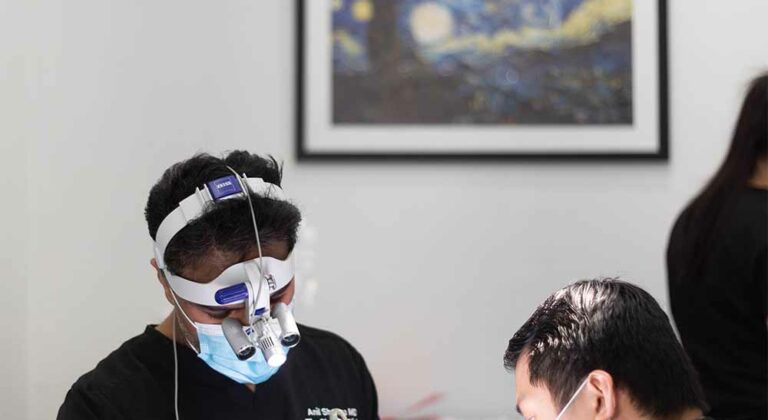Hair loss is a common concern, and for those seeking solutions, finasteride and minoxidil are two frequently encountered options. But what’s the difference between finasteride and minoxidil? Understanding their distinct approaches can empower you to choose the right path for your hair restoration journey.
What’s the difference between Finasteride and Minoxidil?
Finasteride, available by prescription, tackles hair loss at its root cause.
- It works by blocking the conversion of testosterone into dihydrotestosterone (DHT), a hormone that contributes to hair follicle miniaturization in genetically predisposed individuals.
- By inhibiting DHT, Finasteride helps slow down hair loss progression and may even promote some regrowth.
- However, it’s important to note that results can take several months to become visible, and consistent use is crucial for maintaining benefits.
Minoxidil, on the other hand, is a topical treatment available over the counter.
- Minoxidil is believed to stimulate blood flow to the scalp, potentially lengthening the hair growth phase and promoting the growth of thicker, healthier hair.
- While Minoxidil can slow down hair loss to some extent, its primary function lies in stimulating hair regrowth.
- Much like Finasteride, consistent use is essential for maintaining results, and stopping treatment can lead to hair loss reversal.
Is Finasteride or Minoxidil more effective for treating hair loss?
For men with male pattern baldness, Finasteride is generally considered more effective at halting hair loss than Minoxidil [1-2]. However, the best results often come from combining both treatments [3-4].
While Finasteride can be effective for female pattern hair loss, it’s typically not prescribed due to potential interactions with birth control and risks during pregnancy. Premenopausal women should consider alternative options. However, Finasteride can be a valuable tool for addressing hair loss associated with menopause [5-6].
Minoxidil is generally safe for women unless they are pregnant or breastfeeding. If you fall into these categories, explore alternative hair loss solutions.
Finasteride likely won’t provide benefits if your hair loss isn’t related to male or female pattern baldness. These other types of hair loss aren’t driven by hormonal changes, so regulating DHT levels won’t impact growth. In such cases, Minoxidil is often the more effective treatment.
Can you use Finasteride and Minoxidil at the same time?
While both Minoxidil and Finasteride are effective hair loss treatments on their own, research suggests that using them together can significantly enhance results. Studies have shown promising benefits for both stimulating new hair growth and maintaining existing hair density.
Two independent studies investigated the impact of combining a low-dose (0.1%) topical Finasteride with a standard 5% topical Minoxidil solution. The results were encouraging, demonstrating an increase in overall hair count and a reduction in the visible balding area. This suggests that the combined therapy tackles hair loss from multiple angles, potentially yielding faster and more noticeable improvements [4, 7].
Another study explored the potential of using a topical Finasteride and Minoxidil combination to maintain hair density after a course of oral Finasteride. The findings were particularly positive for those who wish to avoid taking oral medications long-term. The combination proved effective in helping patients maintain their achieved hair growth even after discontinuing oral Finasteride use for 8-12 months [3].
While consulting a doctor to determine the best course of treatment remains essential, the potential for increased hair count, reduced baldness, and long-term maintenance makes this combination therapy a promising avenue for those battling hair loss.
What if I don’t get results from Finasteride or Minoxidil?
While Finasteride and Minoxidil are popular starting points for hair loss treatment, they may not always deliver the desired outcome. For those seeking a more permanent solution, hair transplants offer a compelling option.
Hair transplants involve transplanting healthy hair follicles from a donor area on the scalp to the balding areas. This minimally invasive procedure provides long-lasting results, often exceeding the capabilities of medications alone. Additionally, hair transplants can be combined with Finasteride or Minoxidil to further promote new hair growth and maintain your existing hair.
BOOK NOW
Talk to a Hair Transplant Expert in Edmonton, Alberta
Are you looking for the most effective treatment plan to reverse the effects of hair loss? Dr. Sharma has a long-lasting commitment to offering the best services in the industry. Not only is he experienced with hair loss treatment, but he is passionate about helping each patient receive excellent results.

SOURCES
- https://pubmed.ncbi.nlm.nih.gov/15316165/
- https://jamanetwork.com/journals/jamadermatology/article-abstract/2788258
- https://www.ncbi.nlm.nih.gov/pmc/articles/PMC4314881/
- https://www.semanticscholar.org/paper/A-New-Topical-Formulation-of-Minoxidil-and-Improves-Sheikh-Ahmad/ee1a42497f96d235da834df3b6082a4436be3e81
- https://www.ncbi.nlm.nih.gov/pmc/articles/PMC7060023/
- https://journals.lww.com/JDDS/pages/default.aspx
- https://www.ijord.com/index.php/ijord/article/view/1285
Share this:
Medically reviewed by
Updated on
Have a question?
Find out how we can help you look feel your absolute best
Contact us 780-476-7970


